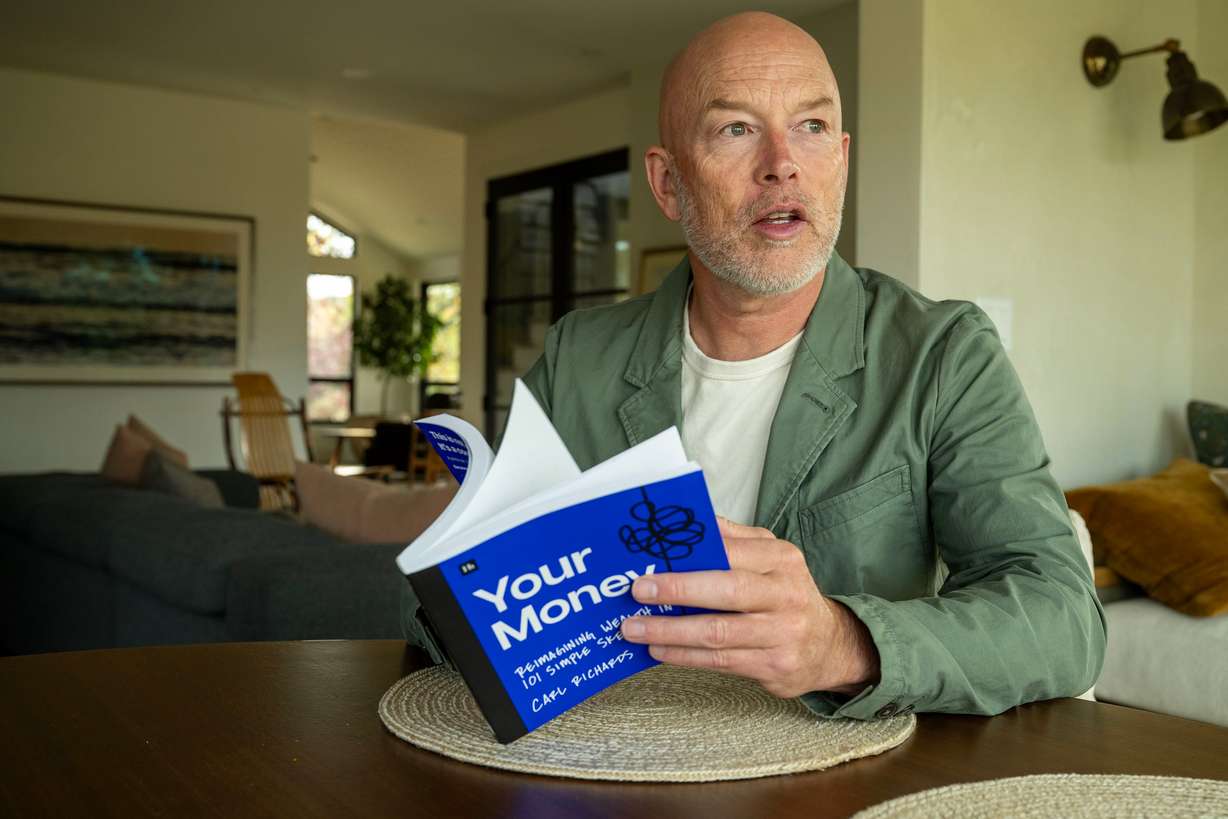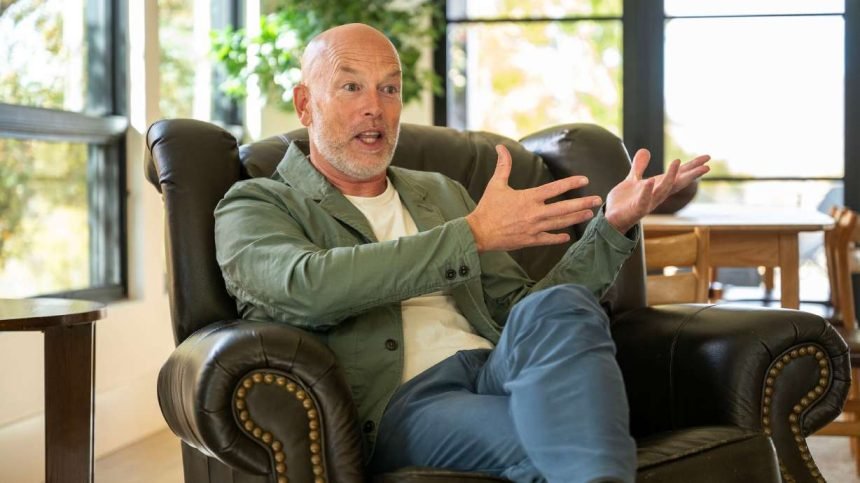SALT LAKE CITY — “I don’t really care about money,” says Carl Richards.
It’s not exactly the first thing you expect to hear from a man who makes his living talking about money.
Then, when he goes on to say, “What I care about is that money is a portal into people’s souls, a way to get them talking about what they really care about,” you know this is not a person trying to sell you a portfolio on the S&P or get you to invest in a new tech startup.
His unconventional message is the focus of a new book he’s released this week: “Your Money: Reimagining Wealth in 101 Simple Sketches.”
Open his book to a page, any page, and there, right in front of you, is a sketch designed to get you thinking deeply about what matters most to you in life.
He calls the sketches “conversation grenades.”
The next thing you know, you’re talking about why you do the things you do instead of how much you have, or don’t have, in the bank.
Is there a market for this “let’s talk about money by not talking about money” approach? Carl certainly thinks so. He’s made it his life’s work. This is his third book on the subject (following “The Behavior Gap” in 2012 and “The One-page Financial Plan” in 2015).
Along with that, there’s his “The Sketch Guy” column that ran for 10 years in The New York Times; his podcast, “Behavior Gap Radio”; the bimonthly retreats he hosts in the Park City mountains; his “Society of Advice” phone calls; and the dozens of speeches and presentations he gives every year. You can even buy frameable copies of his sketches on his website, behaviorgap.com.
Carl has created a space heretofore unfilled in the financial adviser world, with himself as CCO — chief conversation officer.
“I just want to be a conversation starter,” he says. “It feels like we’ve lost the plot in so many ways, where money and work have become the organizing force of our lives. Then you get to the top of the mountain and find a void and ask, ‘Is this all it was for?’
“How we spend our money and our time tells us a lot about what we value. How do I align my use of capital with what’s actually important to me? How do I deal with that gap? That’s what the work is all about.”
It’s having the conversation that matters, he stresses. “So much of it is magic I can’t take any credit for. I just try to expose people to places and questions that allow them to ask a deeper, more meaningful question of themselves. I’m not trying to tell anyone how to live; I don’t want to be judgmental. I’m making all the mistakes too. I’m walking down the same path as everyone else. This is just an adventure journal.”

Tracing “The Behavior Gap” and its unique philosophies to its beginnings, Carl entering the financial world was a complete fluke.
Thirty years ago, he was a student at BYU, studying organizational behavior, and needed some part-time work to help pay tuition. He applied for a job working at night as a security guard. Or so he thought.
“The ad actually said ‘securities,'” Carl remembers. “So I wound up answering phones at Fidelity’s big call center in Salt Lake. I suddenly found myself in the finance industry. I figured it would be just a stopover into getting into some kind of consulting or organizational behavior.”
Instead, as he explains on his website, “That slight misstep sparked a lifelong dedication to reshaping how we think about money.”
But he’s never really left his organizational behavior roots. Never stopped musing more about why we do things than what we do; never stopped looking for ways “to really help people figure out how to live life wide open.” Himself included.
“It’s like what (Stephen R.) Covey said: The last thing you want to do is climb a ladder, only to realize when you get to the top it’s leaning against the wrong wall.”
Money, in Carl Richards’s world, is a way to talk about making sure that doesn’t happen.

The Key Takeaways for this article were generated with the assistance of large language models and reviewed by our editorial team. The article, itself, is solely human-written.











